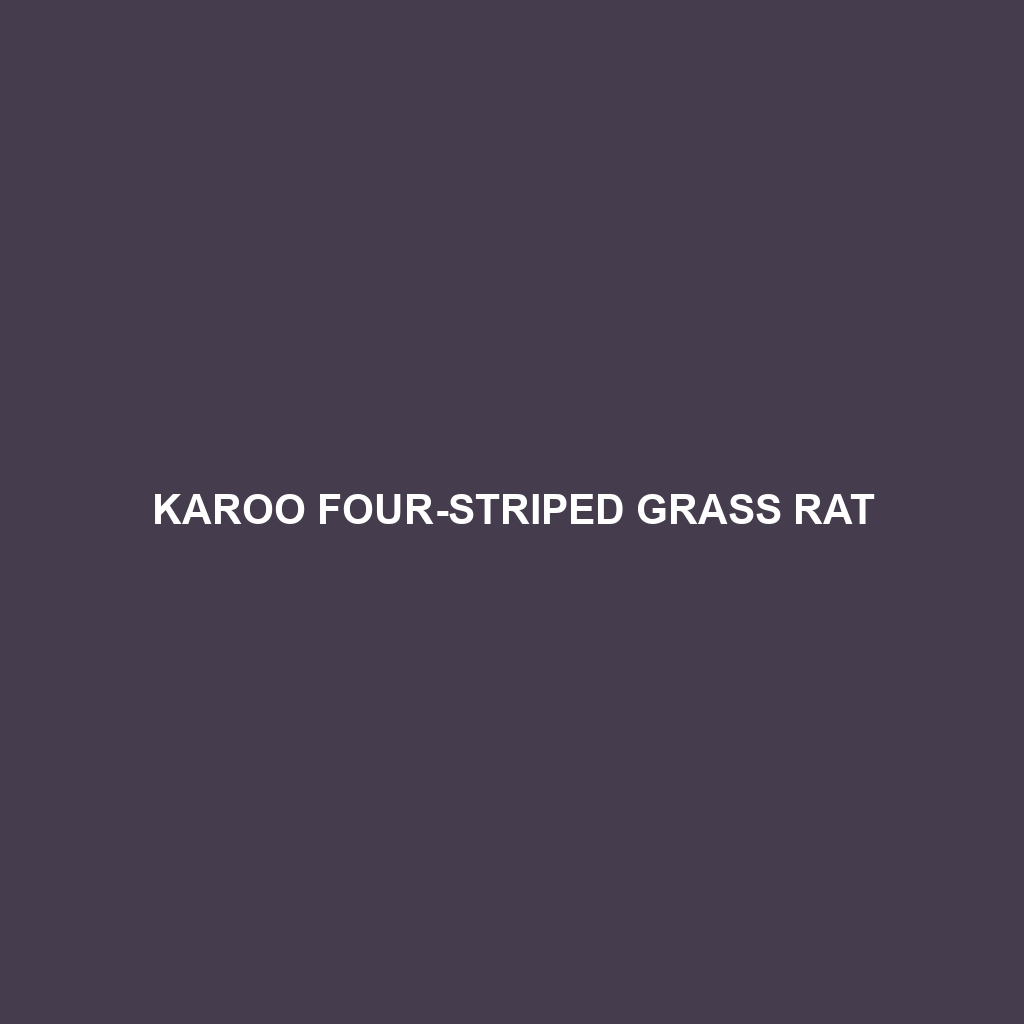Karoo Four-striped Grass Rat
Common Name: Karoo Four-striped Grass Rat
Scientific Name: Rhabdomys pumilio
Habitat
The Karoo Four-striped Grass Rat is primarily found in the arid regions of southern Africa, particularly in the Karoo biome comprising parts of South Africa. This species flourishes in grassy plains, scrublands, and semi-desert areas, where it prefers well-vegetated habitats with abundant cover to evade predators.
Physical Characteristics
The Karoo Four-striped Grass Rat typically measures about 20 to 25 cm in length, with a distinctive tail that is approximately equal to its body length. Its fur is generally a reddish-brown color with four noticeable dark stripes along its back, providing effective camouflage in its natural environment. The eyes are large and prominent, offering excellent vision, while its long ears are adapted for detecting sounds, enhancing its ability to sense danger.
Behavior
This species is primarily nocturnal, exhibiting activities like foraging and social interactions during the night. The Karoo Four-striped Grass Rat is known for its burrowing behavior, creating complex tunnel systems that serve as nests and food storage caches. They also engage in communal living, providing a social structure that enhances their survival against predators.
Diet
The Karoo Four-striped Grass Rat is herbivorous, with a diet that primarily consists of grasses, seeds, and roots. During the wetter months, they tend to consume lush green vegetation, which is crucial for their sustenance and reproductive success. This feeding behavior not only supports their health but also plays an important role in seed dispersal and ecosystem dynamics.
Reproduction
Breeding typically occurs in the warmer months, with females giving birth to litters ranging between three to six offspring after a gestation period of approximately 24 days. The young are born blind and helpless, requiring parental care for several weeks before becoming independent. Notably, the establishment of family groups enhances their chances of survival as adults assist in rearing young.
Conservation Status
The current conservation status of the Karoo Four-striped Grass Rat is classified as “Least Concern” by the IUCN, indicating that it is not currently facing significant threats. However, habitat destruction due to agricultural expansion poses potential risks that could impact their population in the future.
Interesting Facts
– The Karoo Four-striped Grass Rat is known for its exceptional ability to survive in arid conditions by adapting its diet and burrowing techniques.
– They have a unique communication system that involves vocalizations and scent marking, which aids in establishing territory and attracting mates.
Role in Ecosystem
The Karoo Four-striped Grass Rat plays a vital role in its ecosystem as prey for a variety of predators, including birds of prey and mammals. Additionally, their feeding habits contribute to plant growth and soil health through seed dispersion. Their burrowing behavior also helps aerate the soil, promoting a healthier environment for various plant species and supporting biodiversity in their native habitat.
